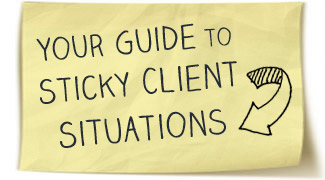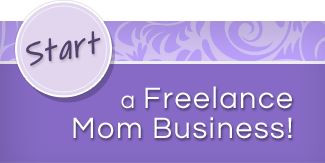Why the Funding Platform Might Not Be Worth Your While
Answer me this. How would you feel if you invested countless weeks, a lot of hard work and a great deal of emotion into raising $2,000 for your business and then suddenly, at the last moment, the funds are torn from your hands? I don’t know about all of you women – but I’d feel really, really pissed off. Unfortunately, that’s what could happen if you decide to use Kickstarter, an online funding platform, to fund money for a business project.
The Reality of Kickstarter
This exact situation is what happened to Janine Franceschi, owner and founder of Pet-friendly Accommodations Worldwide (PAW). With a goal of $10,000, Franceschi used Kickstarter as an attempt to fund a pilot TV episode for a series that would document the best pet-friendly resorts, inns, hotels and private rentals as well as activities, resources and restaurants.
Franceschi spent nearly a month campaigning through a variety of social media engagement tactics but unfortunately, her time ran out with a total pledge amount of around $2,000 – $8,000 short of her funding goal. She didn’t get the earned $2,000 either, because Kickstarter uses an all-or-nothing approach, where an unmet funding goal translates into zero dollars for the campaigner.
But was it a waste for Franceschi? Strangely enough – she said no. The business owner said that even though she didn’t meet her goal or receive any funding, other opportunities arose as a result.
“The campaign gave me a reason to reach out to my community with news and updates,” said Franceschi. “It provided a great excuse for me to blog, tweet, post to Facebook, LinkedIn and Pinterest and gave PAW some really valuable, measureable exposure to new customers.”
Franceschi’s company received 600 new likes on the PAW Facebook page, 500 new Twitter followers and a new weekly blogging gig for Pet 360that will begin later this summer. Persistent in her efforts, she’s decided to forgo online funding at this point and focus on small business grants. PAW is currently in the running for the Chase/Living Social small business grant and Franceschi hopes to secure funding this way.*
Missing the funding mark by $8,000 might be a little easier to cope with than missing the mark by only $200. Imagine that – a goal of $1,300 and pledges that total $1,100, only $200 short of having the funding needed to launch your initiative and still losing it all. This is what happened when Laura Bradley, of Stinge Sitebuilder.com, who was trying to find a way to fund her book, The World And The Junior High Eco-Warriors!
“The all-or-nothing funding method is what hampered my goal,” said Laura. “That was really disheartening because I saw all my hard work go to waste. Furthermore, all of the donations came in from my own network. I had hoped for at least a few donations from the Kickstarter community.”
A bit jaded by losing the funding from Kickstarter, Laura decided to take her campaign to a keep-it-all funding platform – GoGetFunding.com – because she knew that her network of contacts supported her idea and would likely help support her again. This time, she raised $100 more than she did with Kickstarter and was able to execute her project.
Despite the all-or-nothing pitfall, nearly 70,000 projects have met success on Kickstarter, an almost 3-year-old company. Forty-four percent of projects that met deadlines have received funding, with the most successful projects totaling less than $10,000.
As far as popularity of campaign categories, according to the Los Angeles Times:
- Film & Video has had the largest number of projects launched and a success rate of 40%.
- Music projects have had a 54% success rate and have posted the greatest number of successes so far.
- The category with the highest success rate was Dance, at 69%. The one with the lowest success rate was Fashion.
- Film & Video easily wins for most money pledged total, at almost $72 million.
Making Kickstarter Work for You
This article is, in no way, meant to slam Kickstarter. Rather, its purpose is to get you, as a business owner, to ask yourself if Kickstarter is right for your business. Would you mind putting in a great amount of effort if there is no guarantee you will receive the funding you’ve worked for – even if you’ve missed your mark by only $100?
If you are okay with that, you also need to ask yourself what you can do to maximize your chances of getting your goal met and ultimately, your project funded.
“If you really can’t complete your project without raising a specific amount of money, use Kickstarter,” said Laura. “Otherwise, the all-or-nothing funding method isn’t appropriate.”
She said that for those with a little more flexibility who just want to raise as much money as possible – use a keep-it-all crowd funding site such as GoGetFunding.com.
If you do decide that Kickstarter is right for you, Laura said to be sure to set your funding target as the absolute minimum you need. “It’s really painful to see money being returned to backers if you don’t meet your funding goal,” she said.
And like anyone else, the Kickstarter community wants its kickbacks too. If the community members back your project – they deserve a worthwhile reward.
“The projects that seem to work best are those with rewards that are actually worth something in monetary terms,” said Laura. “If you want funding from the Kickstarter community, give something that actually has value.” She said to make sure to consider this when establishing your goal, so you can compensate for the price of the rewards.
Franceschi also adds another essential point after realizing that many people were very new to the concept of crowd funding. She said to make sure that as a campaigner, you explain Kickstarter thoroughly.
“I found a great interview on Google and sent that out to reinforce the legitimacy of Kickstarter and help clarify the concept in a way that my community would understand.”
In the midst of explaining Kickstarter, don’t forget to make sure your project is communicated clearly too. It’s essential that the Kickstarter community understands who you are and what your project is about. Ensure this happens by creating an elaborate, compelling video that gets to the heart of your project and inspires funders to support your initiative. Provide links to your business, to your social media sites and to anything that illustrates who you are and why you need funded.
Also, keep in mind that Kickstarter charges 5% and Amazon 2% for each fully funded project and you need to be comfortable with these terms before embarking on a campaign.
Though that may be bothersome to many, Franceschi said if she met her $10,000 goal, she would’ve been happy to pay those fees.
“These companies really were the conduit for reaching the people who pledged and I wouldn’t have begrudged them a penny,” she said. “I think it’s a fantastic concept where, if the funding goal is achieved, everyone wins.”
Should You Crowd Fund with Kickstarter?
The answer to whether Kickstarter is the appropriate platform for your crowd funding efforts is a personal decision. The question to really ask is – are you okay with campaigning, securing funding and then losing that funding if you don’t meet your goal? If you are, then go for it. If you’re not, don’t waste your time. Try other sources of funding that offer a take-it-all approach.
*Support Franceschi’s funding efforts for Luxury PAW by visiting the Chase/Living Social Mission: Small Business℠ website and voting for Luxury PAW.








